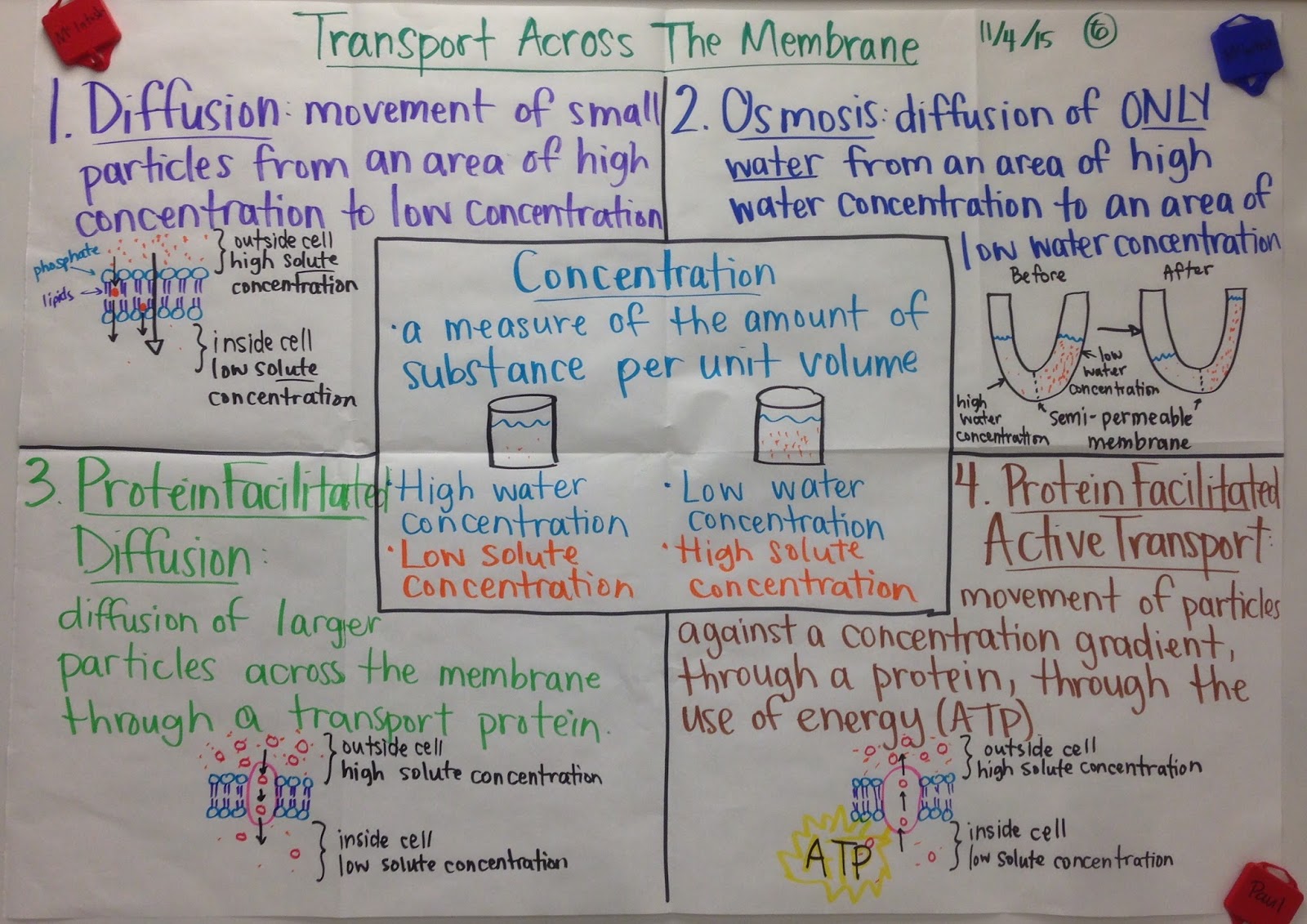

Osmosis: diffusion of water across a "semi-permeable" membrane. (Lawrence) Involves the aid of "transport proteins." Transport proteins facilitate the movement of various nutrients and water across the membrane. (VenterNPR, 25Oct13)įacilitated Diffusion: transport of molecules or ions across a membrane 'down' their concentration gradient by a carrier system without the expenditure of energy. (Norman, 54) Einstein proved what now we call Brownian motion was due to the molecules in water vibrating due to heat at a very rapid rate, and that's what drives all the energy in biology. The more massive components of the solutions are ‘literally blasting the little guys’ into other areas. (Brooker, 32) Brownian movements cause the observable motion of solutions seen under a light microscope. (Norman, 6/3/09) The phenomenon of 'heat energy' causes atoms and molecules to vibrate and move. (Norman Lectures, 6/3/09)īrownian Motion: random movement due to the impact of molecules suspended in liquid or gas. If it is positive-to-positive, the solute does not necessarily cross. If it is negative-to-positive, the solute crosses. Opposites attract so if it is positive-to-negative, the solute crosses. (Also affecting diffusion are) electrochemical gradients. (Venter, 46) Factors affecting diffusion include: travel distance (shorter is faster) “gradient” difference (greater is faster) molecule size (smaller is faster) and temperature (hotter is faster). (Indge, 79) Due to incessant random movement ("Brownian motion") and vibrations of molecules, diffusion is very rapid over short distances, which enables biological reactions to occur with tiny quantities of reactants in the extremely confined volumes of most cells. It can therefore be described as a form of “passive” transport. Instead they go through special “channel proteins.” Since all of the molecules and ions involved are moving anyway, the cell does not require the use of energy for this process.

Ions, which are charged particles, and larger molecules such as "glucose," cannot pass through the phospholipid layer. Molecules such as water, "oxygen" and "carbon dioxide" diffuse readily because of their very small size. (Norman, 41) Fat-soluble molecules dissolve in the “phospholipid” part of the membrane and diffuse very readily. (MeSH) The net movement of molecules (or "ions") from an area of high concentration to an area of low concentration. (Lawrence)ĭiffusion: the movement of materials across cell membranes and “epithelial” layers against an “electrochemical" "gradient,” requiring the expenditure of metabolic energy.

It involves ("transporters") and requires energy. (Brooker, 99) Movement of substances across biological membranes into cells or organelles other than by passive diffusion or passive transport, often occurring against concentration or "electrochemical" gradients. ‘Primary' active transport involves the functioning of pumps that directly use energy to transport a solute against a gradient. Active transport is energetically unfavorable and requires the input of energy. Active Transport: the movement of a solute across a membrane against its “gradient,” meaning from a region of low “concentration” to higher concentration.


 0 kommentar(er)
0 kommentar(er)
